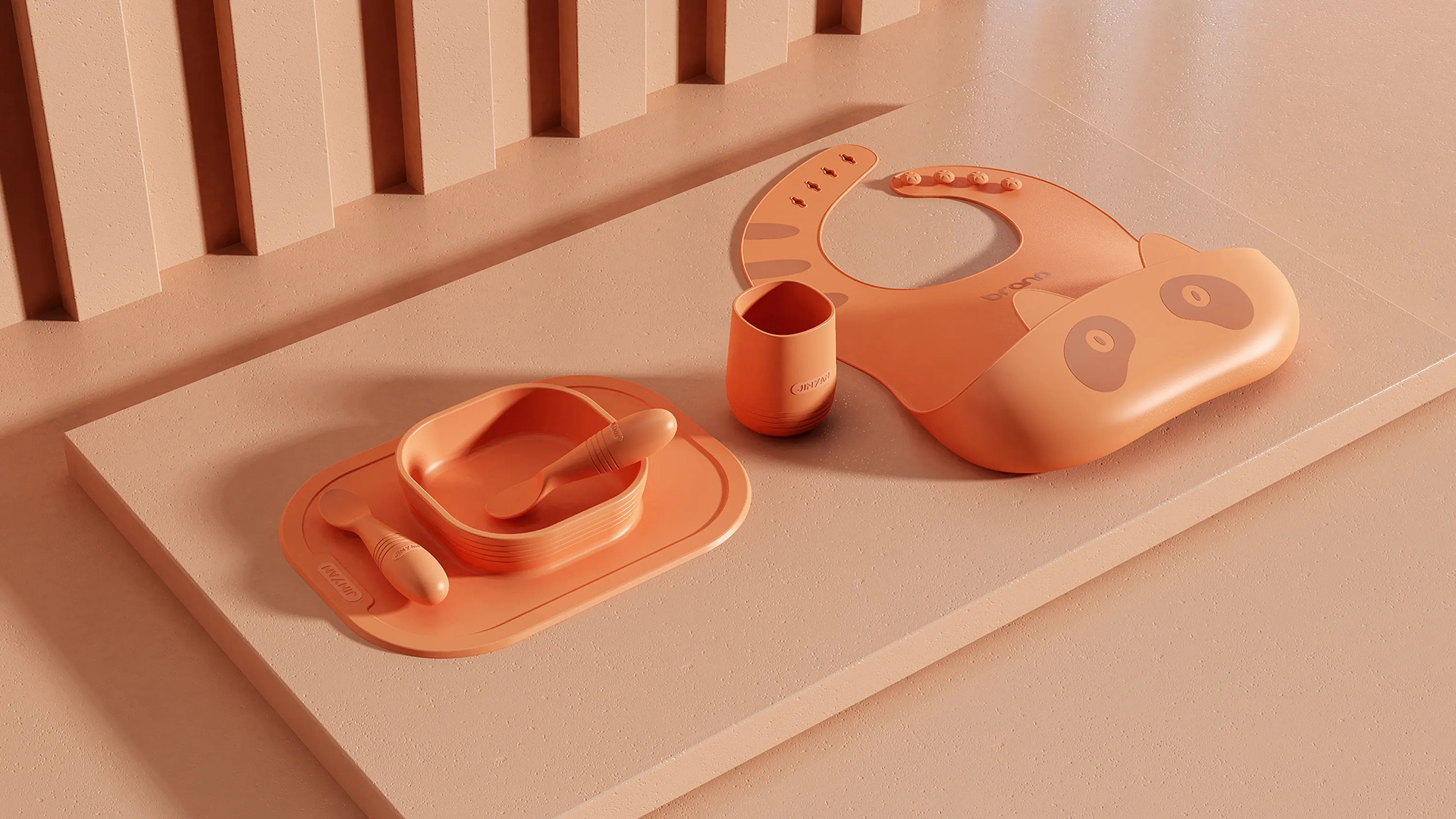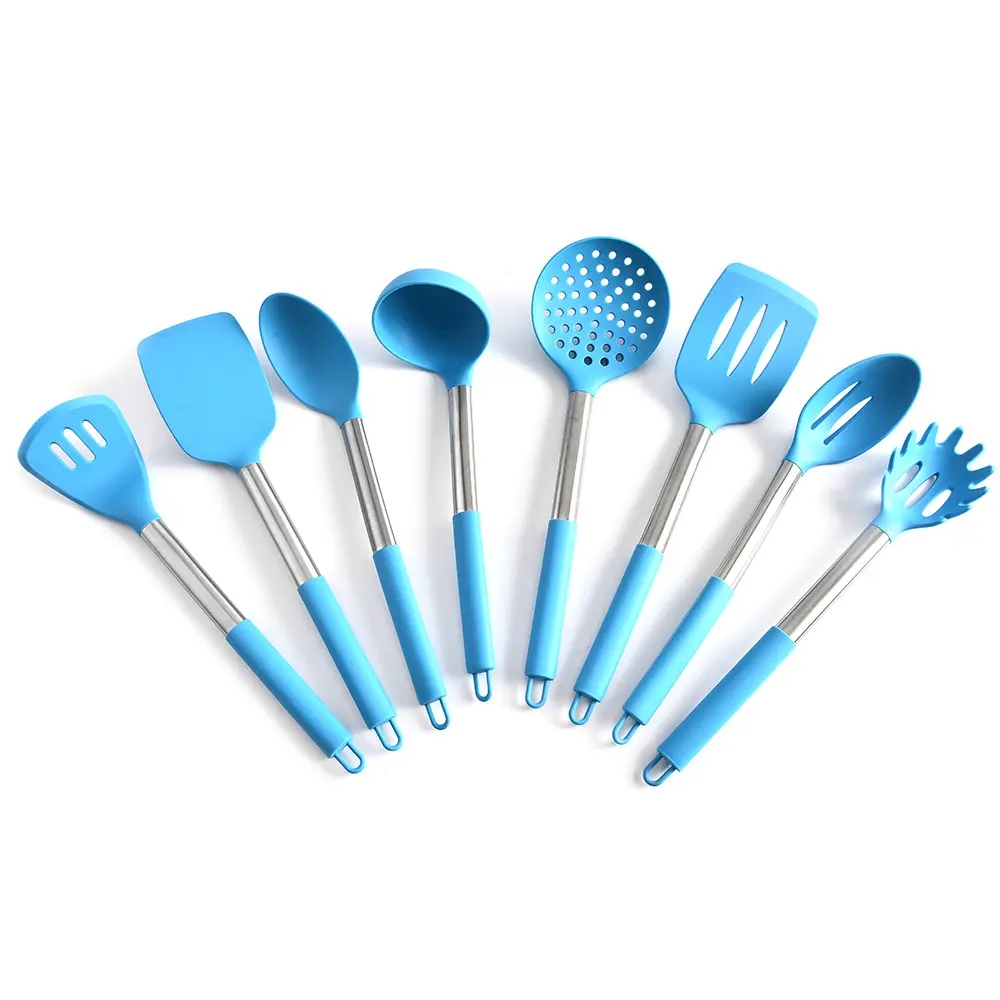Silicone products are very common in life, mobile phone cases, drain racks, kitchen utensils, etc., silicone tableware has gradually entered the public life, to ask whether silicone tableware is toxic? It is certain that products that meet the relevant national standards are definitely non-toxic, unless the manufacturer uses compounds that do not meet the regulations in the production process, resulting in product safety problems, so if you want food-grade silicone tableware, you must find a regular manufacturer. The silicone tableware produced in compliance with relevant regulations has no safety problems and is not poisonous.

Some people will ask, what is silicone? What is it produced or composed of?
Silicone tableware is not poisonous, so what are its advantages and disadvantages?
To talk about the shortcomings of silicone, it is aimed at Chinese people, because Chinese people are used to porcelain tableware and feel that the texture of silicone tableware is not good. The most important thing is that although the heat resistance of silicone tableware is high, it can only To meet the requirements of Western food, for Chinese food, its heat resistance is still lower than the requirements of Chinese food. For example, the high temperature of cooking in high fire often makes silicone tableware unrecognizable.
1. Silica gel is made of condensed hydroxyl-terminated raw silica gel as the base material, hydroxyl hydrogen-containing silicone oil as the foaming agent, and vinyl platinum complex as the catalyst. It is foamed and vulcanized at room temperature.
2. It has high thermal stability, good thermal insulation, insulation, moisture resistance, shock resistance, especially good shock resistance at high frequency. It is an ideal lightweight packaging material.
3. Silica gel is an organosilicon compound, which refers to a compound containing Si-C bonds and at least one organic group is directly connected to a silicon atom. Compounds linked to silicon atoms are also considered organosilicon compounds.
4. Among them, the polysiloxane composed of silicon-oxygen bond (-Si-O-Si-) as the skeleton is the most numerous, the most deeply studied and the most widely used type of organosilicon compounds, accounting for about 90% of the total dosage. %above.

Advantages of silicone tableware:
1. Silicone tableware is made of food-grade silicone material, which is non-toxic, tasteless, safe and environmentally friendly.
2. Silicone tableware can be folded, kneaded, turned over, etc. It does not take up space, and it will not absorb oil stains. It has the function of a desiccant, so it will not become moldy due to long-term storage.
3. The silicone tableware is well matched with the temperature of the food. Regardless of whether the food is cold or hot, the silicone tableware can protect the temperature of the food and reduce the loss of temperature. The food placed in the silicone container can maintain the original temperature after a period of time, and it will not transmit the temperature to the user, so it is not easy to burn.
4. Compared with ceramic tableware, the biggest feature of silicone tableware is that it is resistant to falling, and there will be no sound when it falls on the ground. The ceramic tableware commonly used by Chinese is good in everything, but it is fragile. Although plastic tableware can also withstand falling, but the hardness of plastic is high, and there may be cracks and cracks after falling. Silicone tableware can be easily dropped without worrying about damage.
5. Good heat resistance. The temperature resistance of silica gel is very good, it can not deform or deteriorate at a high temperature of 240 degrees Celsius, and it will not harden at -40 degrees Celsius, so you can use it for steaming, boiling, baking, etc.
6. Silicone tableware is easy to clean. Because silica gel does not stick to oil and does not absorb oil stains, it is easy to clean.
7. There are many colors and shapes. According to the needs of users, many colors can be deployed, and various shapes of tableware can be created.

Silica gel has very strong chemical stability and will not react unless it encounters a strong base. In particular, medical silicone is often used for breast augmentation, nose pads, etc. In daily life, pacifiers, pressure cooker sealing rings, etc. are all silicone products. After the silica gel is burned in fire, it will be reduced to silica, or silica sand, which is harmless to the human body. You can use it with confidence. Silica gel itself is not toxic, but some silica gels are mixed with additives that are harmful to the human body. Silica gel is a highly active adsorption material, which is an amorphous substance, and its chemical formula is mSiO2-nH2O. It is insoluble in water and any solvent, non-toxic and tasteless, chemically stable, and does not react with any substances except strong alkali and hydrofluoric acid. Various types of silica gel form different microporous structures due to different manufacturing methods. The chemical composition and physical structure of silica gel determine that it has many characteristics that are difficult to replace by other similar materials: high adsorption performance, good thermal stability, stable chemical properties, and high mechanical strength. Silica gel is divided into: macroporous silica gel, coarse-pored silica gel, B-type silica gel, and fine-pored silica gel according to the size of its pore size. Due to the different pore structures, their adsorption properties have their own characteristics. Coarse-pored silica gel has a higher adsorption capacity when the relative humidity is high, while fine-pored silica gel has a higher adsorption capacity than coarse-pored silica gel when the relative humidity is low. Between silica gel, its adsorption capacity is also between coarse and fine pores. Macroporous silica gel is generally used as catalyst carrier, matting agent, toothpaste abrasive, etc. Therefore, different varieties should be selected according to different uses. After the silica gel absorbs water, it can be regenerated by exposure, roasting, air drying, etc. [Safety performance] The main component of silica gel is silicon dioxide, which is chemically stable and non-toxic. Silica gel has a strong adsorption capacity and can have a drying effect on human skin. If silicone gets into your eyes, rinse with plenty of water and seek medical attention as soon as possible. Because blue silica gel contains a small amount of cobalt chloride, it is toxic. It should be avoided from contact with food and inhalation. If a poisoning event occurs, seek medical treatment immediately.
In general, silicone tableware is not suitable for the traditional Chinese food environment, but if you often cook western food or eat cold food, the advantages of silicone are more prominent in terms of safety, environmental protection, and foldability.



